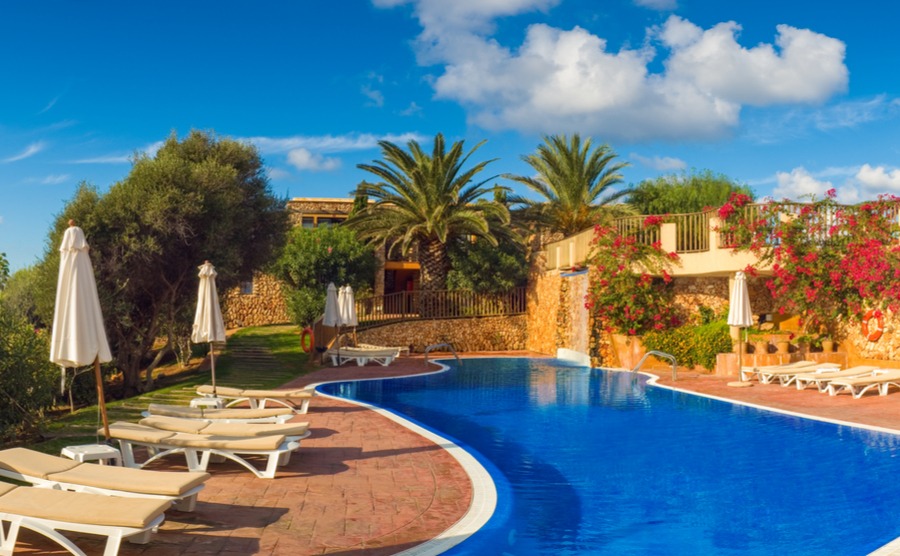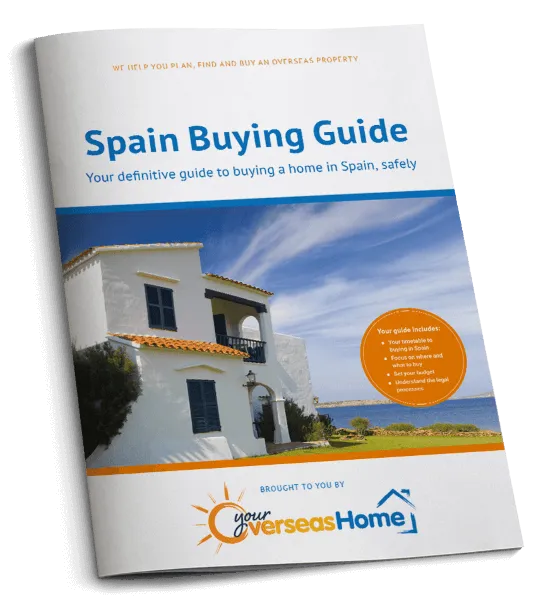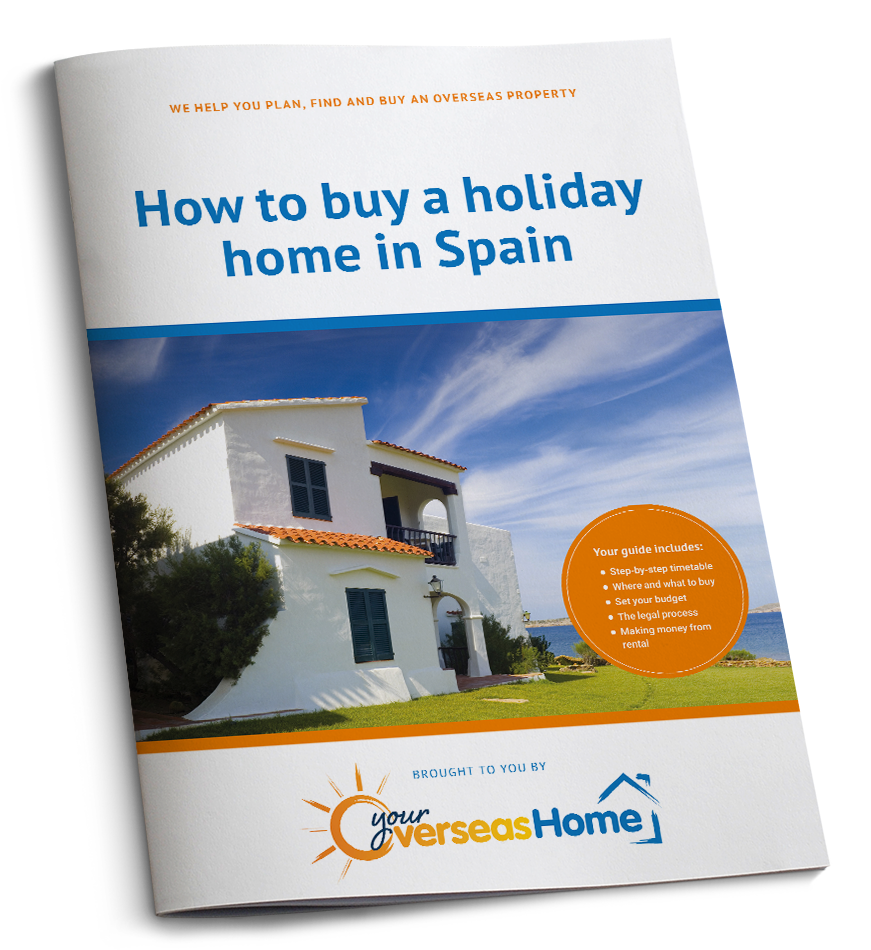A holiday home’s a fantastic choice for the whole family. As Richard Way, owner of a Costa Brava villa, tells us, having one is ‘a treat that many families look forward to coming back again and again’. That’s not all, however. Another huge advantage over spending money on hotels is that a holiday home can actually make a profit for you when you’re not there. The Spanish holiday rental market’s extremely strong, with the country welcoming 82 million visitors last year. Plus, services like Airbnb make renting out your property simple – connecting you directly to renters. Today, we’re investigating what rental income you can expect in Spain’s popular tourist regions from letting out your property. Make sure to read to the end as well to find out what taxes to expect.
Find homes in Spain via our property portal.
Rental income in Spain by region
You’ll find plenty of data out there on Madrid and Barcelona, but these busy cities aren’t particularly popular areas for second-home owners. We’ve pulled together stats from Idealista to find out how much rental income in Spain you can make in expat areas, based on 50m2 and 100m2 apartments.

A holiday home can provide you with excellent rental income in Spain.
Costa Brava
L'Escala 4.6%
St Pere Pescador 5%
Empuriabrava 4%
Figueres 6.5%
Roses 4%
The Costa Brava, right up in the northeast of the country is quite a profitable area of the country to rent out a holiday home. The median rental income in Spain of popular expat areas here gives a yield of 4.8%.
As you can see on the map, there are variations within the region. The more expensive property prices in the coastal regions do lead to slightly lower yields, with 4.6% in L’Escala and 4% in Empuriabrava. Head inland, where property is cheaper, and you’ll get higher yields, like 6.5% in Figueres. The outlier is Lloret de Mar – right on the beach but with a rental yield of 5.4%.
Costa Daurada
Sitges 4.6%
Tarragonès 5.8%
Tarragona 5.2%
Salou 4.8%
Cambrils 5.3%
Tortosa 7.8%
Sant Carles de la Rápita 6.1%
The Costa Daurada, south of Barcelona, offers particularly high yields. The average is around 5.3%. Property prices are lower than the Costa Brava, but rental rates are more or less the same – which is good news for landlords.
Tarragonès, for instance, has a rental yield of 5.8%. Sometimes, just moving a short distance can make a big difference. Salou’s rental yield of 4.7% is beaten by heading just 15 minutes down the road to cheaper Cambrils, with a yield of 5.3%.
Thinking of buying a holiday home in Spain? Pool your resources with your family and you can double (or more) your buying power. Find out how joint ownership works in our guide, Buying Abroad with Family.
Costa Blanca
Moraira 4.7%
Calpe 4.4%
Altea 4.2%
Dénia 5.4%
Benidorm 7.1%
Torrevieja 6.5%
The Costa Blanca is one of the classic holiday destinations and demand is high. The median yield of 5.1% hides quite a broad range of prices, depending on location. Head over to Benidorm and you could get rental yields of 7.1%. On the other hand, expensive areas like Moraira give a yield of 4.7% – at the bottom end for the Costa Blanca, but still much ahead of many other areas for rental income in Spain.
Costa Cálida
Águilas 6%
Mazarron 6.8%
Campo de Cartagena 6.7%
Mar Menor 6.9%
The Costa Cálida, in Murcia, is home to some of Spain’s most beautiful towns and cities, like Cartagena. Property prices here are low, but rental income is high – a combination of low local salaries and high international tourist demand.
The median yield for rental income in Spain if you’re in Murcia is 6.7%. This is fairly constant all around the coast. The Mar Menor will give you a slightly higher yield, at 6.9%. Further south towards Andalucia, you’ll find yields drop a little. In Águilas, it’s 6%.
Costa Tropical
Almuñécar 5.3%
Motril 5.6%
La Herradura 5.5%
Salobreña 5.5%
This exceptionally sunny region – popular among domestic tourists as much as international ones – also has relatively stable yields throughout the area.
The average is 5.5%, which is what you’ll get in La Herradura and Salobreña. Head just ten or fifteen minutes away from the coast and you can get slightly higher yields. In Motril, for instance, you can get 5.7%.
Costa del Sol
Torremolinos 5.8%
Benalmádena 5.4%
Cala de Mijas 4.1%
Alhaurín el Grande 4.9%
A perennial favourite among holidaymakers, the Costa del Sol is a popular place for a holiday home. Nonetheless, with quite high property prices versus rental income, the yields are slightly lower than in neighbouring regions.
On average, you can expect 5.2%. In Cala de Mijas and Alhaurín el Grande, you’ll get around 4.1% and 5% respectively. Further up the coast, however, you can get excellent yields of almost 6% in Torremolinos.
Costa de la Luz
Tarifa 5.6%
Conil de la Frontera 6.1%
El Puerto de Santa María 6%
Cadiz 5%
Right down in the south of Spain, centred on Cadiz, the Costa de la Luz is popular for watersports and more active holidays. The average will get you 5.8% yield, but you can get 6.1% in Conil de la Frontera. Tarifa, with its high property costs, is lower, at 5.5%.
The Balearics
Manacor 5.2%
Port d'Andatx 1.2%
Cala Major 4.7%
Ciutadella 5.9%
The Balearics are perfect for a holiday home – you’ve easy access to the UK, you’re never far from the sea and you’ve plenty of rental opportunities. The median yield is 4.9%.
Mallorca does give lower yield than its surrounding islands, due to high property prices. In pricey Cala d’Andatx, yield is just 1.2%. Nonetheless, over on Menorca, buying in Ciutadella can net you a 5.9% return.
Gran Canaria
Las Palmas 7.1%
Playa del Inglés 6.4%
Telde 6.8%
The main island of the Canaries is another excellent investment for a holiday home. You’ll get some of the best rental income in Spain here among popular tourist areas. The average yield is 6.8%, with popular areas like Las Palmas pushing through 7.1%.
If you’re transferring your rental income to the UK, you could lose out to exchange rate movements. Find out how to control the risk in the Property Buyer’s Guide to Currency.
What taxes will I need to pay on my rental income in Spain?
The tax situation in Spain is a little complicated, as some of it’s set by the national government and others depend on the local Comunidades or Communities (regions).
Most holiday-home owners in Spain will fall into the non-resident category. This means spending fewer than 183 days a year in the country. As a non-resident, you will, however, still be liable to taxes.
There are three mains ones to consider:
Gravamen especial sobre bienes inmuebles de entidades no residentes
Bit of a mouthful to say, but this one’s quite simple. It’s just a special tax on non-residents’ real estate assets. The rate is fixed at 3% of the valor catastral, or land registry value. You’ll normally pay it in January.
Impuesto sobre la renta de no residentes
This is a non-resident income tax. If you’re renting out your property, you’ll need to declare the entire income you receive to the Spanish government. If you’re an EU resident, Spain will tax you at 19%. It’s not clear what will happen after Brexit, but the current non-EU rate is 24%. Do keep up with our news pages for the latest releases on what expats can expect after we leave the EU.
If you’re making a profit, you’ll normally declare your income every quarter, in April, July, October and January.
Impuesto sobre bienes inmuebles
The ‘IBI’ is the land value tax, often known as contribución in Spain. This is where it becomes a bit more fractional. There’s no national rate – it’s decided by the local ayuntamientos, or town halls.
To work out what you’ll pay, you apply your tax rate to your property’s valor catastral, or land registry value.
The rates differ by property type and area.
For an urban property, you’ll likely pay 0.4%-1.1%. For a rural property, it’ll likely be 0.3%-0.9%.
You’ll find various increases based on local context. For example, being the capital of a province can add 0.07% to the rate, as can collective public transport. If a municipality offers ‘extra services’, this can add 0.06% to the rate. The payment date differs between Comunidades, so contact your Town Hall to be sure.
Should I take out insurance?
In a word, yes. It can feel worth playing with luck and not having any, but, as someone running a property with third-party guests, this is so crucial to avoiding potentially expensive situations further down the line. Public liability is a must – otherwise you could find it very difficult if a guest comes to injury while on your home. Equally, knowing that you have insurance in case of damage to your property by others or by natural causes will be a great peace of mind.
We are happy to recommend Intasure as a specialised provider of holiday home insurance. So many of our readers have used them over the years and left us extremely positive reviews about the policies and customer service – simply fill in their form with your requirements to find out more.
What will I pay in total on my rental income in Spain?
To sum up then, you can expect to pay 3.3%-4.1% of your property’s land registry value, based on the Gravamen especial and IBI. You’ll then also pay 19% of your rental income in tax.
If you carefully choose your area both as one you like and one that offers a strong yield, you could find your property is an excellent investment – making far more financial sense than paying out for a hotel each year.
If you have any further questions about buying a property to rent in Spain, please don’t hesitate to contact your Spain property specialists in the Resource Centre on 020 7898 0549 or write to us at [email protected]. Plus, don’t forget to download your free, comprehensive Spain Buying Guide below.

The Spain Buying Guide is a free, independent resource to help anyone who is looking to buy property in or move to Spain through each critical stage of their property buying journey.
Set up to help our readers avoid the many complexities and pitfalls of buying property in Spain, the guide takes you through each stage of the property buying process, with practical recommendations from our experts who have been through the process themselves.











